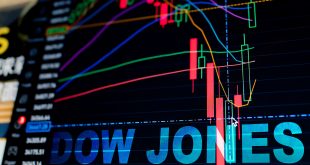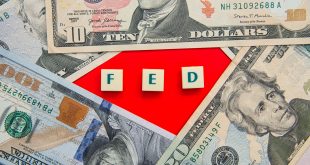Will the Fed’s Cautious Cuts Steer the Economy to a Soft Landing?
The Federal Reserve’s next moves are under intense scrutiny as policymakers navigate a complex economic landscape. Federal Reserve Bank of Philadelphia President Anna Paulson recently signaled support for two additional 25 basis point rate cuts in 2025, a stance that reflects cautious optimism about the U.S. economy. This measured approach aims to balance growth, labor market stability, and persistent inflation pressures. But will these modest adjustments be enough to achieve a soft landing, or are bolder steps needed? Investors and traders should approach this period with vigilance, staying informed about shifting economic indicators.
A Restrictive Yet Flexible Monetary Policy
Current monetary policy remains modestly restrictive, according to Paulson, designed to temper inflation without derailing economic growth. The Fed’s cautious strategy hinges on the belief that inflation, while still elevated, will not spiral out of control. For instance, Paulson dismissed concerns that tariffs could trigger sustained inflationary pressures, citing their limited impact on long-term price trends. Recent data supports this view: core inflation has hovered around 3% in 2025, above the Fed’s 2% target but far from the peaks of 2022. This suggests the Fed has room to ease policy gradually, but missteps could exacerbate price pressures or stall growth. Investors should monitor upcoming CPI and PPI reports to gauge whether inflation aligns with the Fed’s expectations.
Labor Market and Growth: A Narrow Foundation
Economic growth and the labor market rest on a fragile base, with risks mounting. Paulson noted that labor market vulnerabilities are increasing, though not at an alarming rate. Unemployment, steady at 4.1% in recent data, reflects resilience but masks underlying weaknesses, such as slowing job creation in sectors like manufacturing and retail. Growth, while positive, relies heavily on consumer spending, which could falter if confidence wanes. The Fed’s proposed rate cuts aim to bolster these areas by reducing borrowing costs, but their impact may be limited if structural issues—like supply chain disruptions or geopolitical tensions—persist. Traders should remain cautious, as sudden shifts in employment data could prompt the Fed to rethink its pace.
Looking Ahead: A Delicate Balancing Act
Paulson’s outlook for 2026 projects growth near potential, with inflation rising temporarily before subsiding. This forecast assumes the Fed can adjust policy in the near term to avoid over-tightening. By moving slowly, the Fed aims to prevent a recession while keeping inflation in check. Historical parallels, like the Fed’s gradual rate hikes in the mid-2000s, suggest that small, deliberate cuts can stabilize markets but risk falling behind the curve if conditions deteriorate. The current economy, described as “doing pretty well,” offers a window for action, but timing is critical. Investors should watch for signals from Fed Chair Jerome Powell and other policymakers, as their rhetoric could clarify the Fed’s commitment to this path.
The Fed’s cautious approach reflects a pragmatic response to a resilient yet uneven economy. Two 25 basis point cuts in 2025 may provide breathing room, but they are not a cure-all. Investors and traders must stay alert to economic data and Fed communications, exercising prudent risk management in an uncertain environment.

 Noor Trends News, Technical Analysis, Educational Tools and Recommendations
Noor Trends News, Technical Analysis, Educational Tools and Recommendations




